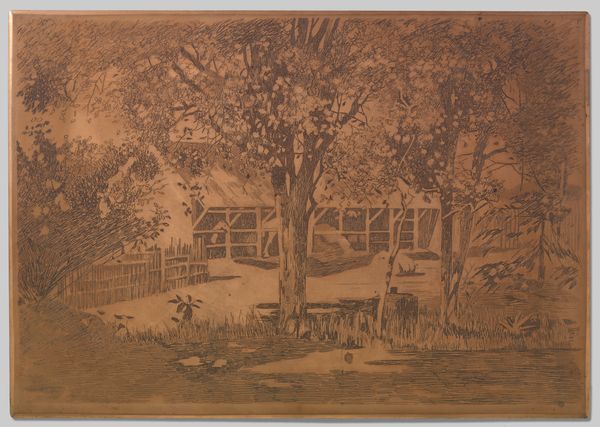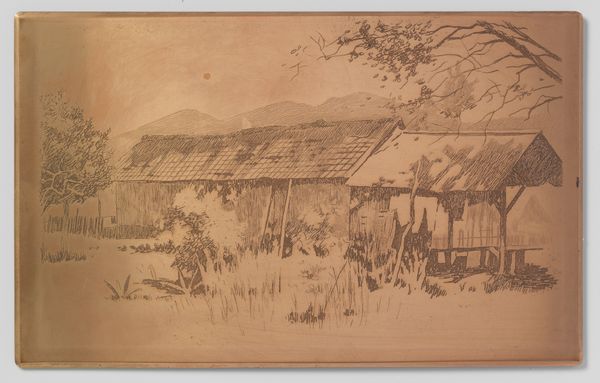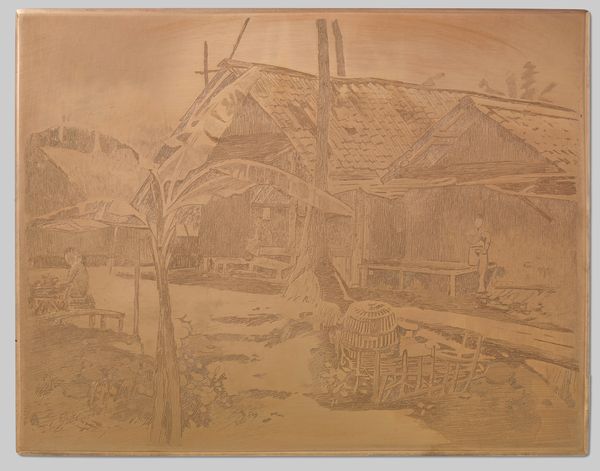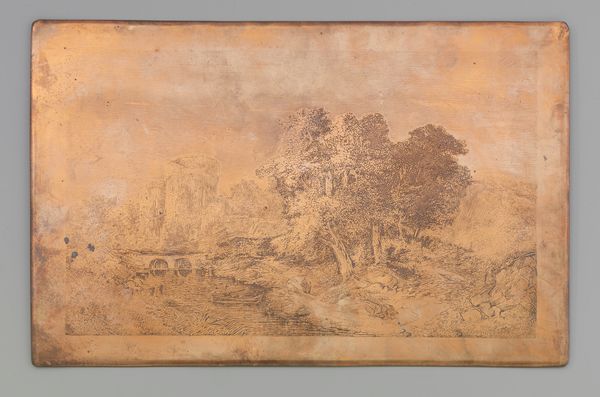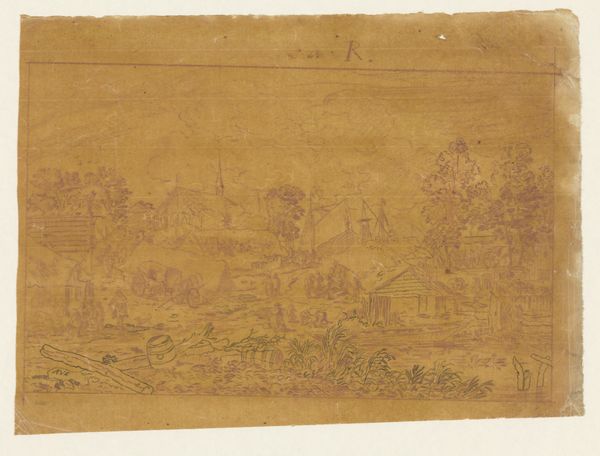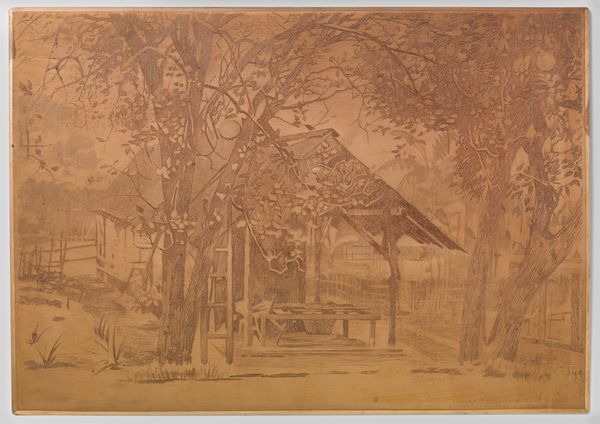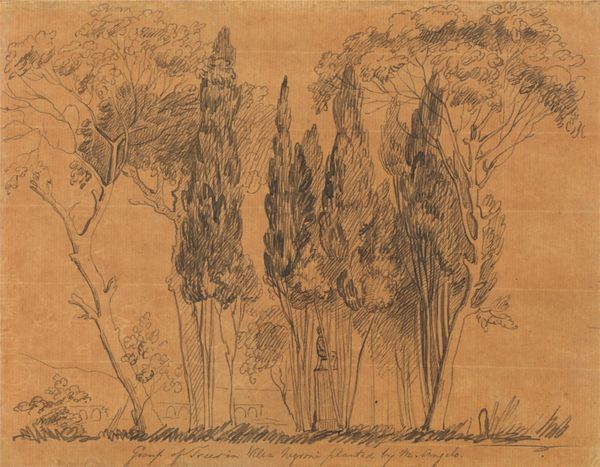
Buitenzorg, kamponghuizen, Salak en Cedeh rechts op de achtergrond c. 1921
0:00
0:00
drawing, print, etching
#
drawing
# print
#
etching
#
landscape
Dimensions: height 402 mm, width 500 mm
Copyright: Rijks Museum: Open Domain
Willem Witsen made this copper plate, titled "Buitenzorg, kamponghuizen, Salak en Cedeh rechts op de achtergrond," using etching and aquatint. These are traditional printmaking techniques, reliant on skilled labor and specialized tools. The copper plate itself bears the marks of this process. We can see the fine lines etched into the surface, holding the ink that would transfer the image to paper. Aquatint allows for tonal variation, creating a sense of depth and atmosphere in the image. But consider the wider context. Witsen, a Dutchman, depicts a scene in what is now Indonesia, a former Dutch colony. The “kamponghuizen,” or village houses, and the landscape are viewed through a Western lens, filtered through the aesthetics of European printmaking. The production of such images was part and parcel of colonial power, of seeing and possessing a distant land. So, looking at this plate, we must remember that it is not just a beautiful object, but also a product of a specific time and place, entwined with the complex relationship between Europe and its colonies. The materiality and making of this artwork are thus deeply connected to social and political issues.
Comments
No comments
Be the first to comment and join the conversation on the ultimate creative platform.

